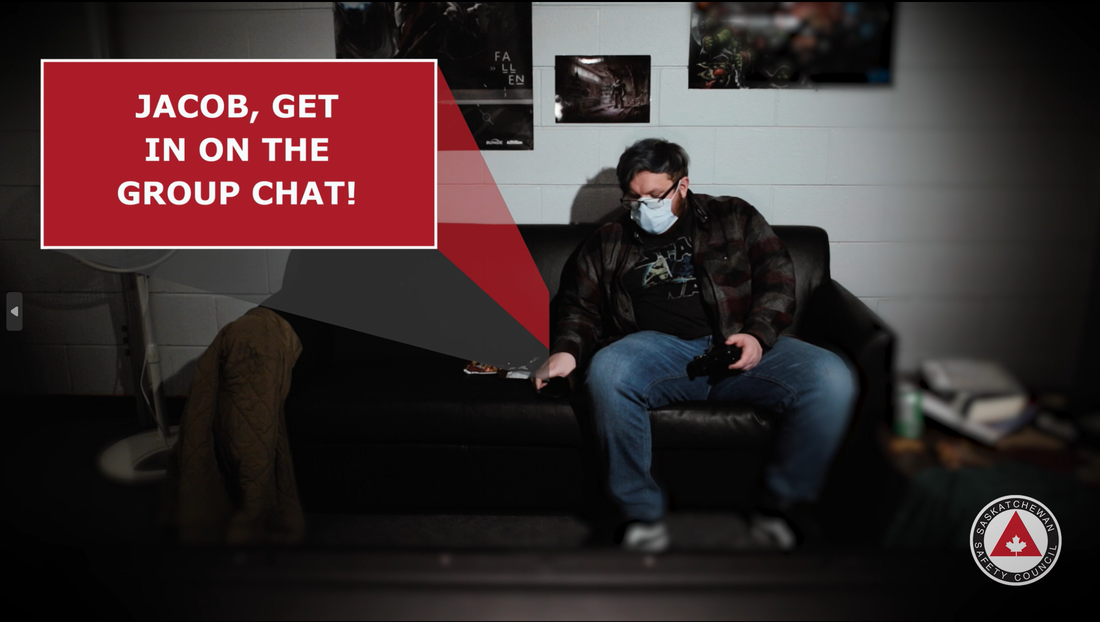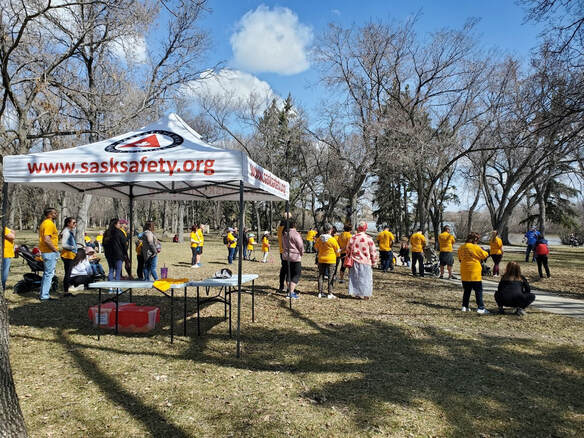|
"C’mon, we’re all doing it!" Have you heard this line before? Peer pressure, social tensions, and violence among youth is not new. Only the popular technology used to influence behviour has changed, and once again, young people have mastered it. In this ever-evolving electronic world, as technology and social development meet, young people always seem to be one step ahead of those that try to intervene early in violent behaviours; often educators, parents, and mentors. Youth have always mastered the trendy and avant-garde technologies of their times. Leading their development, testing the capabilities in ever more creative and involving ways. This often facilitates beautiful expressions of one’s self and environment that can be incredibly healthy and fulfilling. But, for all things there must be balance. Converse to the positive expression, technology can also facilitate the expression of harmful, violent, and even criminal behaviour. The world of cyberbullying - intimidation, humiliation, spamming, harassment, and other harmful tech-facilitated violent behaviours. The trouble for concerned caregivers is that these tech-facilitated communications cannot be seen, heard, or touched. And what’s more, is that the ever-changing evolution of these communication technologies will inhibit a caregiver’s ongoing ability to recognize, intervene, and ultimately treat the youth affected. We decided to investigate this ongoing issue with our friends at Campus Regina Public in Regina, SK. Working with grade 11 students in the “Advanced Media Production & Content Creation Program”, first we discussed issues that were affecting their mental health and social wellbeing. Then, we invited this class to participate hands-on in the production of a short video project on a relevant topic to their daily lives - cyberbullying. What we heard from this class, and what has been documented in surveys collected from hundreds of youth in Saskatchewan, is that the majority of communication happens online, and that cyberbullying had risen to become the most prominent form of bullying. - SAYCW "Youth Health Survey Report 2016" By the mid 2010’s, a technological shift in communication had already occurred long before the youth of today’s school years began. These youth have always felt pressure to join in these new, ever evolving online worlds of communication, a prominent example of which being “group chats”. These multi-user chat spaces are created for seemingly every social circle. Some chats are with family, some are just for friends. Some chats are for sports and rec groups, video games, events, parties… You name it, there is a group chat for it. Two years of online learning supported group chats between classmates and coworkers, teachers and students, further driving much of social behaviour to be expressed online, and further creating an implied approval from authority that online communication is appropriate in most circumstances. The relation between social media, and to an extent communication platforms, is only now starting to become linked to depression, anxiety, and other social stressors. Suicide rates have been steadily rising among youth in Saskatchewan, with suicidal plans and thoughts also being reported by higher and higher percentages of youth (SAYCW study). Behaviours like targeted harassment, privacy violations, social exclusion, and other harmful actions have migrated to the online space with ease. Youth take advantage of the idea that parents, teachers, mentors, and other caregivers are unaware of the harmful communications taking place online. - SAYCW "Thriving Youth, Thriving Communities 2019" Report
As mental health becomes a validated subject as we as caregivers do our best to prevent injuries and promote life, an acute awareness of the modern issues effecting youth is a must in a caregiver's quest to prepare youth with the tools they need to achieve their best. New electronic venues of communication, like “group chats”, are part of a digital world that youth have been forced to learn all on their own. By connecting these modern communication trends facing youth today, to the lessons we have learned from bullying and harassment in the past, we can better care for students and youth to ensure they are prepared to deal with the psychological pitfalls of these modern challenges. Looking for resources? FREE Mental Health Wellness Resiliency Training: https://www.sasksafety.org/online.html Sasktel Be Kind Online: https://bekindonline.com/ Saskatchewan Advocate for Children & Youth: https://www.saskadvocate.ca/ Want to support content just like this? Play a role in the creation of a province of safety excellence. Donate Today at: https://www.sasksafety.org/support-us.html - Charitable Registration Number: 11914-0382-RR Free training and resources are made available thanks to contributions from our Donors, Members and Sponsors that believe in our shared goal of creating a province of safety excellence. An abundance of caution March of 2020, we will remember it for years to come. To keep Saskatchewan Safety Council volunteers safe, we postponed in-person content creation, translations, or events until it was safe to do so. Today, we continue to live with Covid-19, but now we are more cautious and prepared. In 2021, our Saskatchewan Safety Council Volunteer Team jumped at the chance to participate in content creation, translation, and events. We had the pleasure of listening to New Canadian families describe their experiences coming to Saskatchewan, their safety concerns, and the community groups that helped them find resources. Our Content Team met community members discussing addictions and substance abuse, and Seniors in Saskatchewan showed us the beautiful benefits of “keep it moving”! Welcoming volunteers in 2022 Speaking about mental health, in January of 2022 we extended an invitation to participate in a mental health resource video. Our staff and volunteers answered the call generously, with 13 participants volunteering to participate! Those who were involved in this mental health resource video shared their thoughts on why being open and speaking up about mental health is important to them. Each volunteer had their own thoughts, their own opinions, but one message remained the same, “Don't hide it, speak up”! Videos like this need to be translated into other languages spoken across Saskatchewan. If you are bilingual and interested in translating safety video resources or text material, please email [email protected]. For those who have moved to Saskatchewan from another province or country, you know how difficult it can be to understand information that is only available in English. Our resources, and the services that Saskatchewan Safety Council has to offer, can benefit any community and injury prevention services are available for all ages. To be prepared, understanding the information completely is necessary, and you can help members of your community by translating this content. Looking forward, our Volunteer Team will have an important role in future content creation pieces and events. Our Safety Centre of Excellence site will need support, not just during the construction phase, but as operations kick into gear the help of the community and our Volunteer Team will be integral to this success of this project. Please volunteer, share, and subscribe for updates on this amazing news, a long-time dream is finally in the stages of coming true. Are you our next Community Safety Champion?
Why become a volunteer with Saskatchewan Safety Council? We can’t complete our mission to Create a Province of Safety Excellence without you! Whether it is being involved in our video resources, on camera, translating important safety messaging and resources, becoming a Community Safety Champion or Social Media Advocate, or being a part of an Event Steering Committee, each role helps to support the work that we do and supports the prevention of injuries from happening in Saskatchewan. When they say it takes a village, that statement couldn’t be more true. Join us and complete a Volunteer Application Request today: https://www.sasksafety.org/volunteer.html.  - Amanda Wood, Community Relations Coordinator - Amanda Wood, Community Relations Coordinator
Derek Wold, Committee Chair of Steps for Life, shared that their goal for donations was increased three times, and that the Regina area campaign progress raised over $5,000!
Every day, there are 3 workers who die in Canada resulting from a workplace incident, which every year leaves over 1,000 families to heal and try to live on without their loved ones. If you were unable to attend this year, we hope to see you next year! The Steps for Life walk takes place across Canada, and in Saskatchewan, the annual fundraising walks are held in Regina and Saskatoon. We invite you to learn more about Steps for Life and welcome you to join us and continue to offer support to these families suffering and help us to prevent these incidents from happening altogether.
 Volunteer through your place of work... Volunteer through your place of work... Volunteer Application Request - The Saskatchewan Safety Council is accepting volunteer applications from those interested in participating in the creation of multi-media content which will be published and distributed via our website and social media properties. Opportunities vary greatly from simply being the subject of a safety video participating in an activity you regularly participate in, to playing a role with an assigned script. You may be just another face in a crowd or the primary subject with a safety message to deliver. You need only be comfortable with being photographed, or filmed, and willing to sign a release and non-disclosure agreement. Beyond that, you determine which projects you are a part of and how. We need all ages from all walks of life in settings both rural and city. Topics include farming, sport / recreational activities, traffic, in-home and home maintenance safety, and workplace safety. Be a part of the #SafeChoice movement. Learn more about the ways you can volunteer by visiting http://www.sasksafety.org/about-us/volunteer  Ed Dyna, Inductee to Saskatchewan Safety Hall of Fame, shared his appreciation for the honour via desktop video as he could not be present for the ceremony. Ed Dyna, Inductee to Saskatchewan Safety Hall of Fame, shared his appreciation for the honour via desktop video as he could not be present for the ceremony. This past February during the Industrial Safety Seminar, Mr. Ed Dyna, a pillar within the province and across Canada for the safety profession and beyond, was inducted into the Volunteer category of the Saskatchewan Safety Hall of Fame. Ed has actively volunteered with the Canadian Society of Safety Engineering every year since 1986. In that time, he served on every position of the Executive for the Northern Lights chapter, including as Chair Person. He also served as the national Regional Vice President of CSSE, representing Saskatchewan and Manitoba for 4 years. He was co-chair of the national CSSE Professional Development conference for four years and was Chair of other committees including the National Committee on Advocacy of the Safety Professional and the #NAOSHWeek national committee. Ed has volunteered with:
Learn more about the Saskatchewan Safety Hall of Fame |
Archives
November 2023
Categories
All
|












 RSS Feed
RSS Feed
